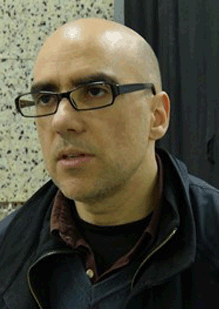Volume 26, Issue 1 (2020)
GUEST EDITOR MESSAGE
Twenty years ago, during the transition between millennia of the Gregorian Calendar, I was enrolled as student in a PhD program titled “Areas of Research in Energy and Environment in Architecture” at the Polytechnic University of Catalonia’s School of Architecture. In that time, these subjects of research were quite marginal to architectural status quo, at least in my country, Portugal, the reason why I felt the need to went abroad to improve my knowledge and skills about sustainable architectural design. Half decade earlier, during my post-graduated MSc studies in the University of Minho where I now teach, I focused my research interests in the work of Frei Otto and its team carried out on the Institute for Lightweight Constructions in Stuttgart. During my PhD I began to think on how could lightweight and heavyweight constructive systems be mixed for achieving more sustainable buildings in a temperate climate. Since then I have been concentrating my efforts as architect, researcher and academic, on this approach, based on three strategies that I can resume as: vernacular (heritage conservation and refurbishment, traditional materials and technologies); low-tech (new materials in traditional technologies and traditional materials in new technologies) and high-tech (new lightweight materials and technologies). I have been considering the implementation of these strategies isolated or mixed, without any prejudices, as I think that what really matter is how to obtain less environmentally unsustainable buildings taking into account the specific context in which these strategies are applied. I prefer to use the term environmentally unsustainable, because, as any human activity, it’s utopic to ambition positive or even neutral impacts in the ecosystems and landscapes, at least while we keep increasing the expectations on unlimited development with a continuously growing world population. The interest about sustainability of the built environment is reflected in the number of Architectural educational programs, research centres, publications, conferences and legislation that are focused in this subject. In fact, not just as inhabitants of this planet, but as professionals whose actions and words have a strong influence on the built environment, Architects’ ethics should conduct us to find the appropriate answers to reduce the footprint in our acts. We may witness, during these last years, the overwhelming increase, not just in the interest about this subject, but on the arising of desperate voices that publicly claim for an effective implementation of actions in view of environmental sustainability. Covid-19 ironically helped to point out this need, showing that improving the air quality in our cities and being more respectful to the natural environment are not intangible goals, just depends on our personal and societal joint efforts and sacrifices. This issue of Architecture and Planning Journal, published right in the middle of this pandemic crisis, cover a wide spectrum of subjects; however, I’m pleased to verify that almost all the reflections presented have in common the promotion of strategies for a more sustainable built environment. Some focus in the building scale, from the pedagogical approach based on the 1 to 1 scaled Design (Build Method) learning in architectural education, to the Integration of Photovoltaics in facades and the Biophilic Design of Outdoor Pedagogical Spaces. Others are more related with planning and urban scales, with subjects such as: Sustainable Development Concepts to Revitalize an Historic Urban Quarter, Rainwater Harvesting in a Coastal Zone, Functions’ distribution on Waterfronts, Social Heritage Conservation and, the use of Space Syntax for Enhancing Pedestrian Flow. In the border line between the building and the urban scales is a paper reporting a research on the conditioning of Wind tunnel effect on pedestrians’ comfort. Finally, I must point out an article, titled Para(Noia)Metric: Architecture beyond the Edge of Rationality, which deals with a very pertinent discussion topic today, the misuse of emerging digital technologies in such a way that it may conflicts with sustainable development goals.
Paulo Mendonça, Associate Professor - University of Minho
ENHANCING UNDERGRADUATE ARCHITECTURAL EDUCATION (SCALE 1 TO 1 DESIGN - BUILD METHOD)
Mostafa Khalifa and Mostafa El Hefnawi
INVESTIGATING THE RELATIONSHIP BETWEEN USER'S DENSITIES AND FUNCTIONS DISTRIBUTION ON MEDITERRANEAN WATERFRONTS: STATISTICAL ANALYSIS APPROACH
Sima El-Cheikh, Mary Felix, Nabil Mohareb, and Ibtihal Y. El-Bastawissi
EXPERIENTIAL LEARNING BASED BIOPHILIC DESIGN
Marwa Charkas
TECHNO-ECONOMIC ANALYSIS OF USING PV CURTAIN WALLS IN HOT ARID ENVIRONMENTCASE STUDY; MIXED-USE BUILDING, JEDDAH, KSA
Abdelaziz Farouk A. Mohamed and Ahmed T. Elfakgarany
SAVING THE MEMORIES IN THE FRAMEWORK OF SOCIAL HERITAGE CONSERVATION IN EGYPTIAN VILLAGES
Dalia Shebl Said
EMPLOYING SUSTAINABLE DEVELOPMENT CONCEPTS TO REVITALIZE THE HISTORIC URBAN QUARTER OF AL-MUIZZ STREET, CAIRO, EGYPT
Baher Ismail Farahat
ENHANCING PEDESTRIAN FLOW IN PUBLIC SPACE THROUGH USER SEGREGATION
Ali Sedki and Farah Iaali
OPTIMUM WINDBREAKER TO REDUCE WIND TUNNEL EFFECT ON OCCUPANT COMFORT AT PEDESTRIAN LEVEL (A CASE STUDY OF BAU BUILDING IN TRIPOLI)
Dima Khoder Merhy, Nabil Mohareb, and Mostafa R. A. Khalifa

Guest Editor
- Associate Professor - University of Minho
- Paulo Mendonça
Issue Editorial Board
- Professor of Architecture, Urban Design and Planning Dean, Faculty of Architecture - Design & Built Environment, BAU
- Prof. Dr. Ibtihal Y. El- Bastawissi
- Associate Professor of Architecture and Environmental Design Faculty of Architecture - Design and Built Environment , BAU
- Assoc. Prof. Maged Youssef
- Professor of Architecture and Urban Design Faculty of Architecture - Design and Built Environment , BAU
- Prof. Ayman Afify

